
Open 24/7! Servicing all of Sydney’s Eastern Suburbs
Our Average Response time is: 1hr 53min 47sec
Go into any hardware or homemaker store and you will likely be greeted with an enormous array of tapware in different styles, sizes, colours, shapes, and efficiencies. With so many options to choose from, the idea of choosing the perfect tapware for your home can border on overwhelming, if not downright impossible.
However, there are ways to cut through the busy noise of the huge range available, allowing you to choose a polished and cohesive look as well as one that reflects your personal style and taste.
Let's explore the range of tapware available, how to find quality fittings, and how to choose the perfect taps and other fixtures that will perfectly complement the overall aesthetic of your home.
Tapware is the collective term for the fixtures that control the flow of water in a sink, bath, or shower, and encompasses the shower head, spouts, nozzles, and handles that control and deliver water flow. When choosing tapware, you must consider its aesthetic, its function, and its efficiency in order to make an informed decision.
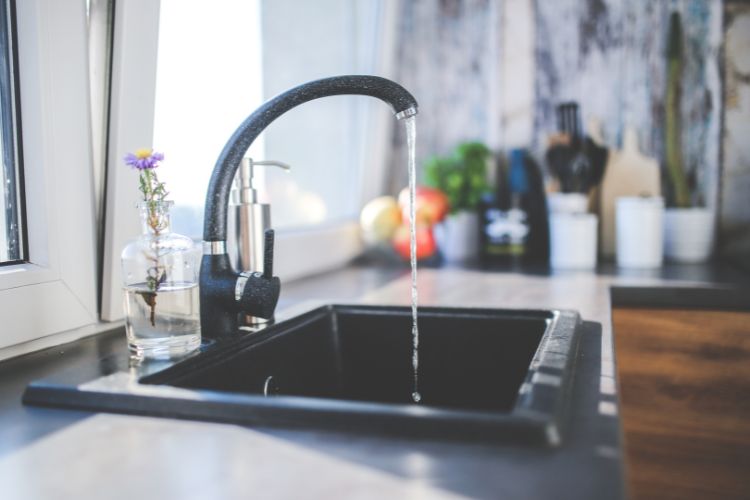
It comes in an incredibly wide range of styles, from a classic style (including antique aesthetics) to minimalist tapware, from gunmetal grey to brass or stainless steel, with many options now also coming with water-saving features to help you save. So, where do you start?
Choosing tapware occurs in two main situations: during a new build or a renovation. Whether you are replacing existing tapware or first developing your kitchen and bathroom design, it helps to break down the design process to create a shortlist of options from the vast range available. Tapware has an obvious practical function, but it is also a way to tie in the myriad design elements in your home.
Which tapware option(s) you decide on will be based on both visual and practical reasons. Here are a few things to consider when you first start to explore your tapware options.
If you're looking to renovate or redesign your bathroom and kitchen plumbing, assess your existing plumbing setup and determine how much of it needs to be replaced. Does the basin also need to be updated or just the tap? Are you intending to replace the handles but leave the spout or do you want to replace the entire set-up? What is your budget like, and how flexible can you be with purchasing?
Considering these questions will help you begin to formulate a plan of attack. Modern taps have a lifespan of 15–20 years, so there's certainly no need to rush into making a decision.
The room and its purpose will also impact your tapware choices. Laundry tapware will be different from a bathroom tap which will be different again from kitchen sink taps. How many people will be using the tapware and how often? What is the existing aesthetic of the room and what kind of tapware will fit in?
Additionally, consider who is most likely to be using the tapware over the long term. Will young children find it easier to use a hot and cold tap separately to avoid a risk of burns or is a mixer tap appropriate?
Some antique styles may look fantastic but can be difficult for elderly hands to grip properly.
Determine your overall budget, including the cost of a professional installation. Think about the costs of additional extras, such as a specific finish or being water efficient. Remember, tapware is a long-term decision, so be mindful of your budget, but don't be afraid to choose what speaks to you.
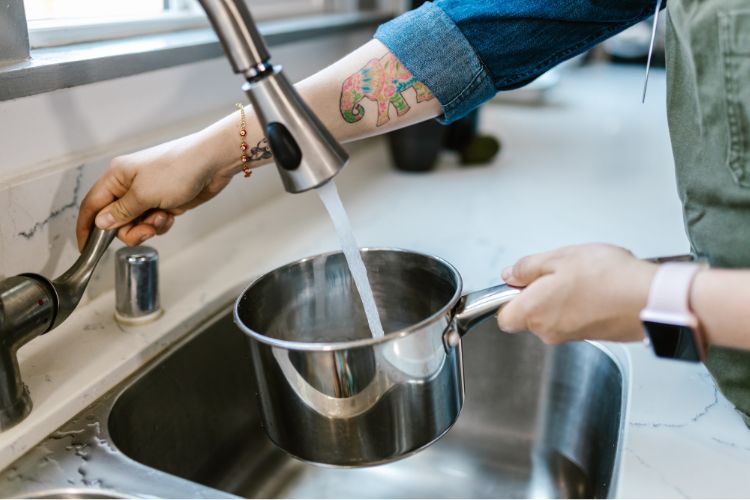
A common and convenient choice for bathrooms and kitchens, mixer taps combine hot and cold-water control in the one lever, making them incredibly easy to use. With a long temperature control handle, this tap choice offers a sleek design for your kitchen or bathroom.
As their name suggests, wall-mounted taps are mounted directly into the wall, commonly found over a bath or above the sink in modern laundries. A space saving option, wall-mounted taps are fantastic for small bathrooms or places with limited space around the sink and countertop.
Basin mixer taps are a smaller variation of mixer taps, delivering a stylish option that nonetheless possess sleek lines without overpowering the rest of the basin design. Consider a basin mixer tap to enhance a modern bathroom aesthetic.
Chrome is timeless and never goes out of style, making it one of the most popular finishes for tapware.
Easy to clean and durable, maintaining chrome tapware is simple and easy to do. Suitable for both traditional and modern aesthetics, chrome suits a wide range of styles without looking out of place.
With all the class and versatility of chrome with some added character, brushed nickel is another popular choice, perfect for contemporary aesthetics. Modern and sleek, brushed nickel is a suitable choice for many kitchen and bathroom styles. Like chrome, it is easy to keep brushed nickel and maintain its finish for years to come.
There are several other tapware finishes available for you to consider based on the existing design of your indoor space:
Gunmetal is a dark metallic grey option that works well with contemporary bathrooms, both as a contrasting colour and to support and tie in other gunmetal elements.
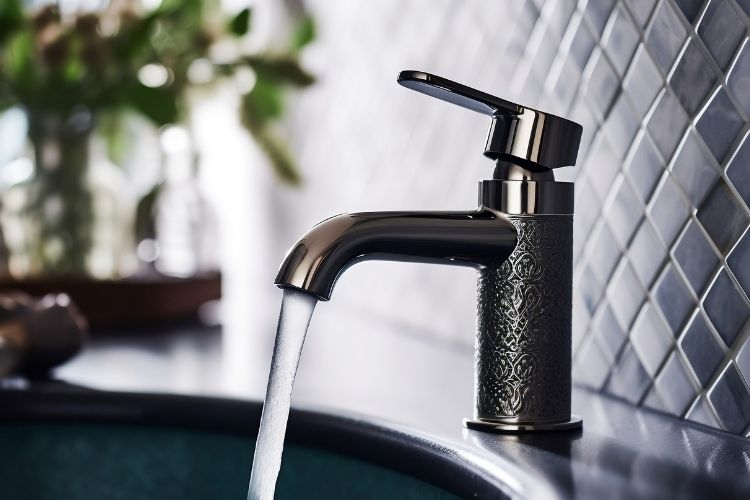
Matte black is a bold but effective finish that is effective against white or marble backdrops. It certainly makes a statement!
Brass with a gold finish is an elegant choice that adds a degree of warmth and an air of luxury to both light and dark surroundings.
Whether your bathroom is traditional or modern will influence the fixtures you choose to install. Choose options that complement the existing design. Tapware should complement but not overpower other design elements. Consider the space and how you want to use it: will a wall-mounted or basin mixer tap be a more effective use of space?
In your kitchen, the type of sink and countertop you have will play a big part in your design choices.
Choose tapware that enhances the finish on your countertop and sink and think about the functionality of your fittings. Will a mixer tap be sufficient, or will a pull-out spray tap be more convenient?
Modern taps are becoming more and more water-efficient over time without sacrificing water pressure. Taps that have a low water flow rate will save you money when the water bill comes, so be sure to check the Water Efficiency Labelling and Standards (WELS) rating of any tapware options you're considering before you make a purchase.
Temperature control is important in both the kitchen and bathroom (and laundry) so look for taps that provide a balanced mix of hot and cold water. Mixer taps are incredibly convenient for this, as you can find the optimal temperature with just one hand, but traditional taps have an aesthetic that may be more important than this element of convenience.
For commercial bathrooms, sensor taps are effective and hygienic for high-traffic areas. Hands-free activation limits the spread of germs, while the modern technology of a sensor lends an advanced feeling to the set-up.
In commercial kitchens, pull-out spray taps are the pinnacle of convenience. Perfect for large sinks where you have (and need) space to move, a pull-out tap makes cleaning and rinsing a quick and simple task, ideal for when the orders are coming in thick and fast. Pull-out taps come in a range of designs and finishes, ensuring your kitchen looks and functions are entirely up to date.
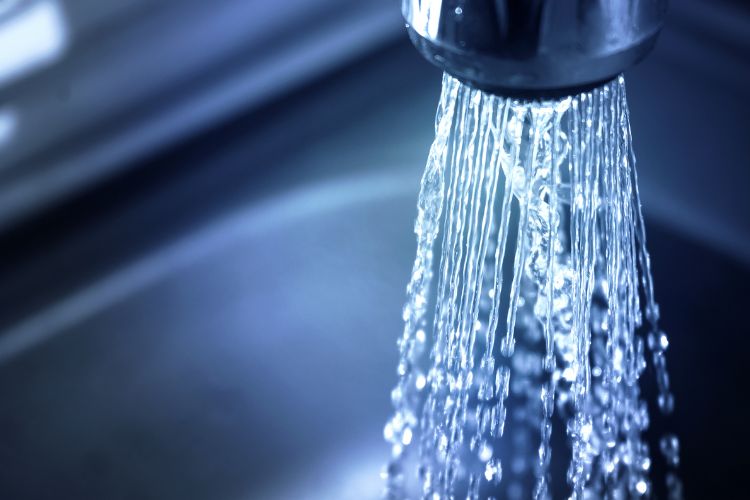
Modern taps have a lifespan of 15–20 years, generally speaking, so be sure to pick durable, high-quality materials for your tapware. Options like brass and stainless steel will ensure you get the longest usage possible out of your tapware.
Check the manufacturer's reputation and reliability to determine the quality of their products. Look for manufacturers with a comprehensive warranty and responsive customer support. Both of these will help you to feel more secure in your choice and give you peace of mind for years to come.
Hiring a professional plumber to install new tapware is the best way to ensure it is installed properly and quickly. A new tap is made of many components, some of which are incredibly small, so unless you're 100% confident in installing plumbing fixtures yourself, the additional cost of hiring a professional is often well worth it. Consider the cost and benefits as well as the risk of damaging a tap component before you make an installation decision.
Maintaining your tapware helps to ensure its longevity by keeping it clean and monitoring for any damage or wear and tear. You should clean the outside of your taps and plumbing fixtures weekly to prevent a build-up of dirt, soap scum, and other contaminants.
Schedule a yearly inspection from your local reputable plumber, who can run a complete diagnostic test over all your fittings and pipes to ensure the entire system is working as it should be. They can also replace any worn-out washers or O-rings in the taps before the tap starts leaking and dripping.
While the choice of design and aesthetic is completely yours, let a professional plumber handle the installation and maintenance of your tapware. A trusted local plumber can fit your new tapware, whatever style and make you have opted for, in a fraction of the time as a DIY job. They can also test your water pressure, modify the existing plumbing if necessary, and assess any additional problems that might arise before they can become a concrete issue.
Still unsure what the best tapware for your kitchen or bathroom is? Why not consult with a professional in the plumbing fixture industry to get all of your questions answered in one easy place?
Professional consultants will be able to explain which taps are best for double sinks, why shower mixers are an efficient choice for any bathroom, and whether gooseneck taps or swivel spouts are the most suitable for your situation. Whether you are after a sleek and modern look or you want to conserve countertop space, a professional consultant will be able to point you in the right direction and offer the best recommendations for your aesthetic and functional needs.
Of course, the best way to get an idea of how tapware options look and feel is to see them in person in a showroom or display home. Showroom spaces are built by professional designers, so you can really see the different style choices shine and perhaps even get some extra inspiration.
Seeing the options in front of you also gives you a more accurate idea of how the fixtures will look under different lights, which will differ from professional photos taken and uploaded to the manufacturer's or retailer's website.
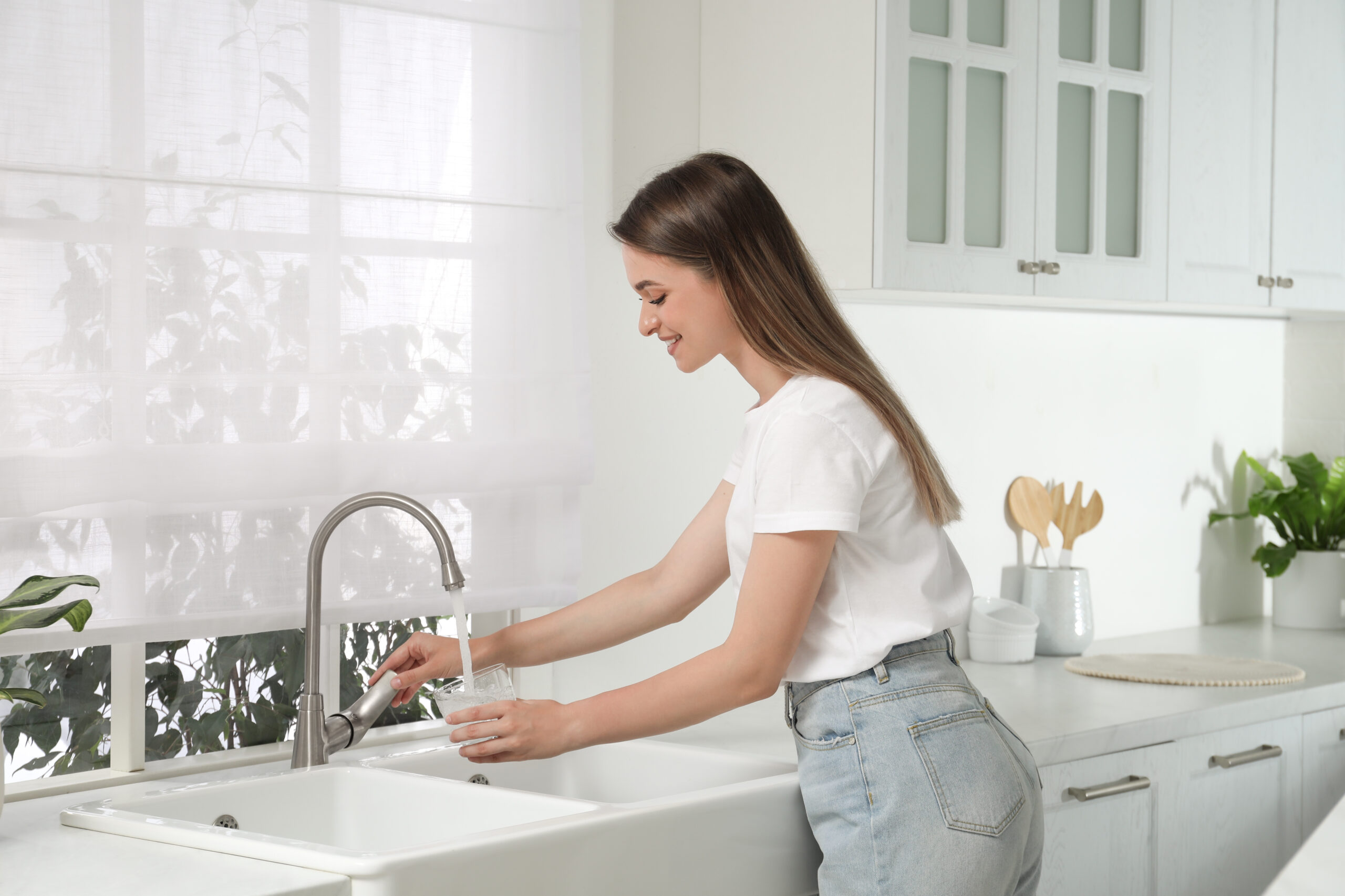
While there are different styles involved, they are functionally very similar. However, kitchen taps can often be larger than bathroom taps to accommodate their functional needs, such as filling cooking pots and washing piles of dishes.
Yes, you can, provided the kitchen tap fits the bathroom's sink and tap hole spacing matches.
Metallic tones like chrome and brushed nickel never go out of style.
Yes and no. Water from the bathroom comes from the exact same source as that from the kitchen.
However, differences in the plumbing may change the taste slightly. Both sources remain perfectly safe to drink.
Is it time to revamp your tapware to revitalise your bathroom or kitchen? Ready to throw out the kitchen sink, remodel in the style of traditional bathrooms, or install tapware with an innovative design and fresh look? We've got you covered.
Plumberoo is your local trusted plumber located right here in eastern Sydney. With expertise in both shower repair and tap repair, we can replace those old fittings for you so that your bathroom or shower looks as good as new. Get in touch with our friendly team today to find out how Plumberoo can help you achieve the bathroom or kitchen you have always wanted.
The impact that hard water can have on your plumbing and appliances that use this water can be easy to overlook. While the water itself is fine to drink, though it may have a slightly unpleasant metal taste, over time it can wreak absolute havoc on your plumbing system due to the buildup of mineral deposits.
Join us, as we explore what hard water is, why it's an important issue to be aware of, and what to do about it to protect both your home plumbing system and your appliance efficiency.
Hard water is a mineral-rich water containing high levels of dissolved calcium and magnesium, though it can also contain levels of other metals such as iron and manganese. These minerals are found in abundance in limestone and chalk deposits and are picked up by water flowing through them as part of the water cycle.
While hard water is almost certainly harmless in terms of human consumption (except for the metallic taste), it can cause mineral buildup and internal damage to plumbing systems and appliances, resulting in a reduced lifespan for both. Understanding what hard water is, what it does, and most importantly, what to do about it, is vital for homeowners, particularly those living in areas with high levels of calcium and magnesium in the earth.

Though dissolved minerals in hard water are invisible to the naked eye, over time they build up and up, adding new layers imperceptibly over time. The minerals in hard water are akin to dust in the air. We don't notice it when it's moving about, but we notice the layers once they settle, and once we do finally notice it, it can be a lot worse than we expected to find.
However, we may notice the problems if mineral deposits (also known as limescale or scale) build up long enough. Scale buildup restricts water flow, causing decreased water pressure and weakened water flow. It can also coat the inner workings of your hot water heater, sharply reducing its efficiency as it builds up in a layer between the water and the heating elements, wasting electrical power. If left unattended, both situations can lead to costly repairs or replacements.
The minerals in hard water affect metal surfaces, such as taps and metallic fixtures, by binding to them, which causes signs of corrosion, rust, tarnishing, and other types of damage. Over time, this rust and corrosion can break down the metals inside the workings of the tap, causing components to become fragile and/or stuck together. Eventually, and without intervention, fixtures will malfunction and break.
To save yourself costly and inconvenient replacements, it is best to regularly monitor your water supply and the impact it is having on your pipes to prevent corrosion and damage to taps and other fixtures.
Hard water can also seriously impact the internal workings of most household appliances. Hot water heaters are particularly susceptible to these minerals for three main reasons. First, many models have a large water tank so there is immediately a higher amount of minerals present. Second, the constant use of household hot water means water is constantly replenished from the mains, bringing more and more minerals in. Third, there are many important internal components that are made of corrodible metals.
In fact, modern hot water heaters have an internal rod called a "sacrificial anode" or "anti-corrosion anode" that is specifically designed to attract corrosion in order to spare the other metallic workings.
While this is effective for water with normal amounts of trace elements, hard water can overwhelm this rod and attack the other internal components, leading to reduced temperature efficiency, higher energy bills, and a reduced supply of hot water.
Dishwashers and washing machines are two other appliances that are at risk of internal corrosion from hard water. Both machines spray water over their internal workings, which, while watertight, can still contain metallic components. These inner components facing the water, by design, can still face corrosion, and if it is not addressed promptly, a small hole or crack can develop, giving the hard water-free access to other more sensitive parts of the machines.
Fortunately, there are devices called water softeners that can be fitted between the appliance hose and the wall hose to filter out the dissolved mineral content. Water softeners can also be fitted into your water supply, reducing minerals in the water sent to other parts of the house.
If you look inside your kettle and see a white chalky coating on the heating coil, then you're likely looking at hard water damage. It is best to remove this immediately with a limescale remover, as the corrosion acts as an insulator, meaning that even though the kettle is using the same amount of power, it is not heating water to the same temperature.
The same is true for other small appliances, like coffee machines, but can also impact other appliances like fridges if they have a cold-water function or ice maker built into the door.
While hard water can affect anyone, the effects of water hardness are more common in older or heritage homes in Sydney, especially if they have metal pipes over modern PVC plumbing. However, even homeowners living in new builds should be aware and stay vigilant for signs of water hardness.
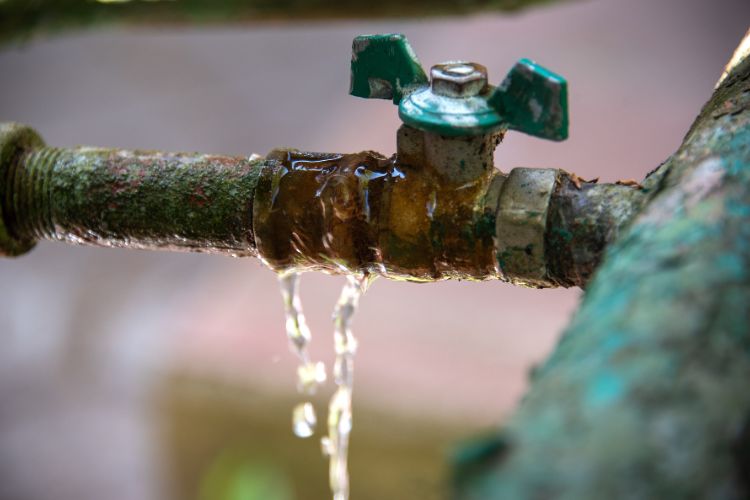
Water softeners are a type of water filtration system that removes calcium and magnesium ions from your water supply by causing them to bind to components inside the water softener. Soft water lacks the metallic taste of hard water, is gentler on pipes and appliances, and minimises the chance of scale buildup or mineral deposits forming.
However, water softeners must be regularly maintained to keep them working at their best, so make sure you check them at least once a year.
It can be difficult to know what to do about hard water given that we have no control over what mains water pumps out to us, but what we can do is protect our homes where mains meet our home's plumbing.
Installing a whole-house water filtration system helps remove impurities and other contaminants from your water supply, but it doesn't usually remove the minerals that make water "hard". However, installing a water softener alongside your water filtration system can give you the best of both worlds, keeping your water both soft and clean. This makes it safe to drink and stops your appliances from undergoing hard water issues.
Installing a water softener or checking your pipes for signs of mineral buildup are not always simple tasks, so it's best to discuss water treatment options and have an ongoing maintenance plan with a professional plumber. Using CCTV camera technology, plumbers can inspect your pipes all the way out to the mains connection to assess and report on whether hard water is impacting your plumbing.
Regular maintenance is essential to protect your plumbing and appliances from mineral buildup. If you notice scale buildup inside your appliances, use a descaling solution to help break down the minerals, then check and replace any worn-out or damaged components, before inspecting in and around the connecting pipes for further signs of corrosion.
Maintaining your pipes and appliances helps to extend their life, improve their energy consumption, and keep them working at their optimal performance. However, sometimes emergency repairs or replacements are necessary, and for that, you need a trusted and licensed plumber.
Hard water can cause sudden and severe plumbing issues to occur, including burst pipes or major leaks. This is because as mineral deposits form and thicken, the pipe diameter reduces, and there is less room for the same amount of water to flow through. This will eventually lead to reduced water flow, but increased water pressure. Over time, the pipes will weaken as the plumbing system undergoes consistent high stress until cracks or splits form.
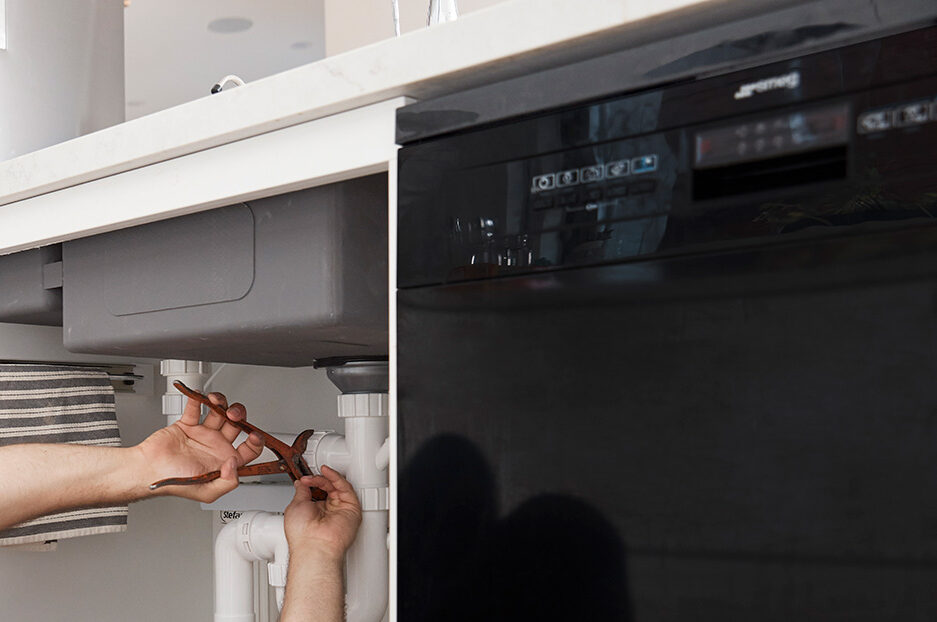
If this happens, call in an emergency plumber to handle the crisis quickly and effectively. They have the know-how and experience to assess and fix emergency situations before water damage accumulates or further issues can develop.
Virtually none. Soft water only has trace elements of minerals, typically 60mg/L or less, which has a negligible effect on plumbing and appliances.
A water softener will not remove existing mineral buildup, but it will prevent further buildup from developing. The only way to remove minerals is to use a descaling agent.
If you suspect you have hard water or would like an assessment of your plumbing system, call the experienced plumbers at Plumberoo. If you're in Sydney's eastern suburbs, we can be at your door within the next two hours, so avoid costly repairs and take action against hard water now.
Whether you need plumbing fixtures replaced, clogged pipes reopened, or a water softener system installed, the team at Plumberoo has you covered. Get in touch today to improve your water quality and restore your plumbing to its absolute best.
If you've ever heard the old saying "a stitch in time saves nine" you know that taking action now to fix a smaller problem can save you a massive headache (not to mention a huge bill) later. Plumbing maintenance should be a consistent and regular process, yet it is often overlooked.
Given that our plumbing and pipes usually operate entirely unseen (underground or in the walls), we only really think about it when something goes wrong. The sink blocks up, the toilet doesn't flush, the shower gives out only a dribble of water, or worse, we find water damage or a burst pipe leaking in the morning.
The importance of regular plumbing preventative maintenance cannot be overstated, not only to give you peace of mind but to save you from expensive repairs later on. Hiring a professional plumber now to conduct your plumbing maintenance can save you enormously in the long term. Here's how.
What is a small leak in a pipe today can become expensive water damage tomorrow, so being on top of your preventative plumbing maintenance should be treated as an investment rather than an outright cost. Like your car, your electricity, or even the public infrastructure we enjoy like roads and the internet, without maintenance they will eventually stop working.
Your home plumbing is no different.
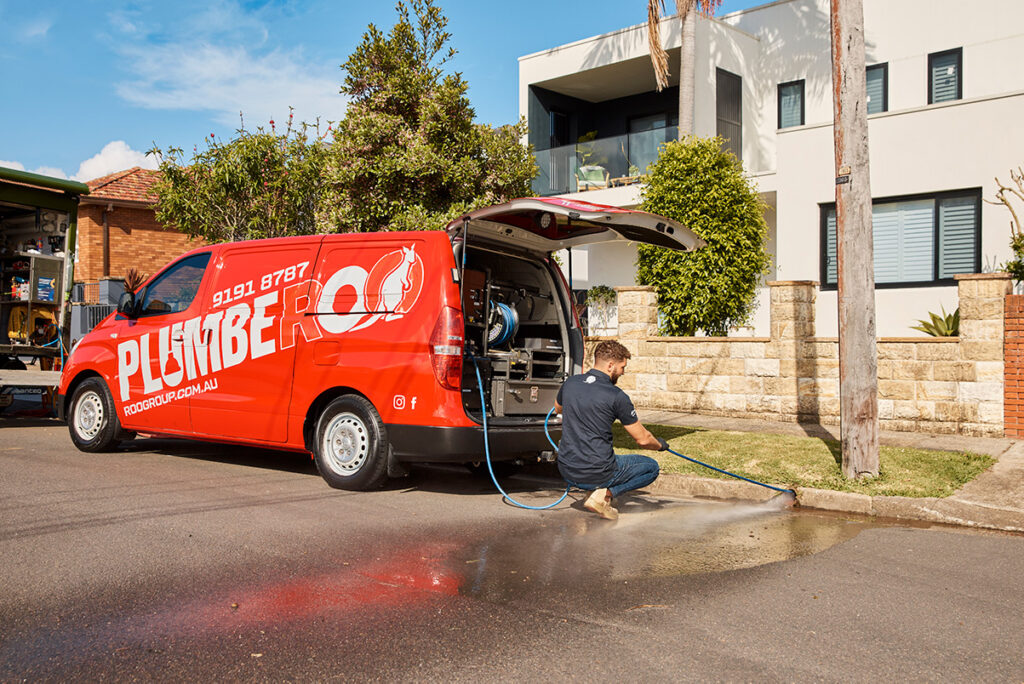
Regular plumbing maintenance helps expose the issues early that otherwise go unseen. We notice when a sink is blocked, but how long has that blockage been forming before we see a noticeable issue? That is what preventative maintenance is all about: anticipating and finding problems before they become expensive, time-consuming, and inconvenient to fix.
The symptoms of maintenance neglect include an increase in clogged drains, water pressure issues, and a higher likelihood of pipe cracks and leaks. However, getting to your plumbing can be a difficult exercise, so contact your local plumber if you're unsure about what to do or need some advice.
The benefits of regular maintenance checks include the prevention of plumbing emergencies, which saves on an expensive future fix and the inconvenience that comes with it. Secondly, by ensuring your systems are working effectively, your plumbing will have peak water efficiency which will lower your water bills. Ultimately, the primary benefit of regular checks is identifying and fixing minor issues early, catching them well before they turn into major (and expensive) problems. A few dollars spent now saves on a big bill later.
Apart from the increased efficiency and cost-saving benefits mentioned above, a well-maintained plumbing system also has a longer lifespan, provides a more stable and comfortable water supply, and gives you peace of mind and a sense of confidence that your system is healthy and without issue.
While a well-maintained system can save you money on your water bills, regular plumbing checks can also help to improve your home's energy efficiency. This includes servicing your hot water system to ensure it is running at its optimal efficiency and not using more energy than is required. This is particularly true in hot climates, which can place additional strain on water heating systems.
Preventative maintenance is the best way to prevent plumbing emergencies, such as burst pipes, which can lead to wasted water, water damage inside the house, and expensive repairs. However, it also includes optimising your plumbing system, such as fixing leaking taps and fitting efficient fixtures to showers, taps, and hoses to ensure you are using your water as effectively as possible.
In some parts of the country (like Perth), the mains water is considered "hard", which means it contains high levels of calcium and magnesium. This can lead to mineral build-up inside pipes, taps, and appliances, which can cause blockages and the feeling of low water pressure to occur.
What seems like low water pressure is often caused by mineral build-up narrowing the pipes, increasing internal pressure and leading to cracks or leaks. This can cause cracks and leaks to occur as the pressure exceeds the pipe's design. Regular maintenance addresses these issues, and the application of water-softening solutions helps to reduce scale build-up and extend the life of your pipes and appliances.
Blocked drains are a common problem and can occur for a variety of reasons, including food waste down the sink, leaves and sticks down the drainpipes, or tree root intrusion linking water supply or sewage to the mains.
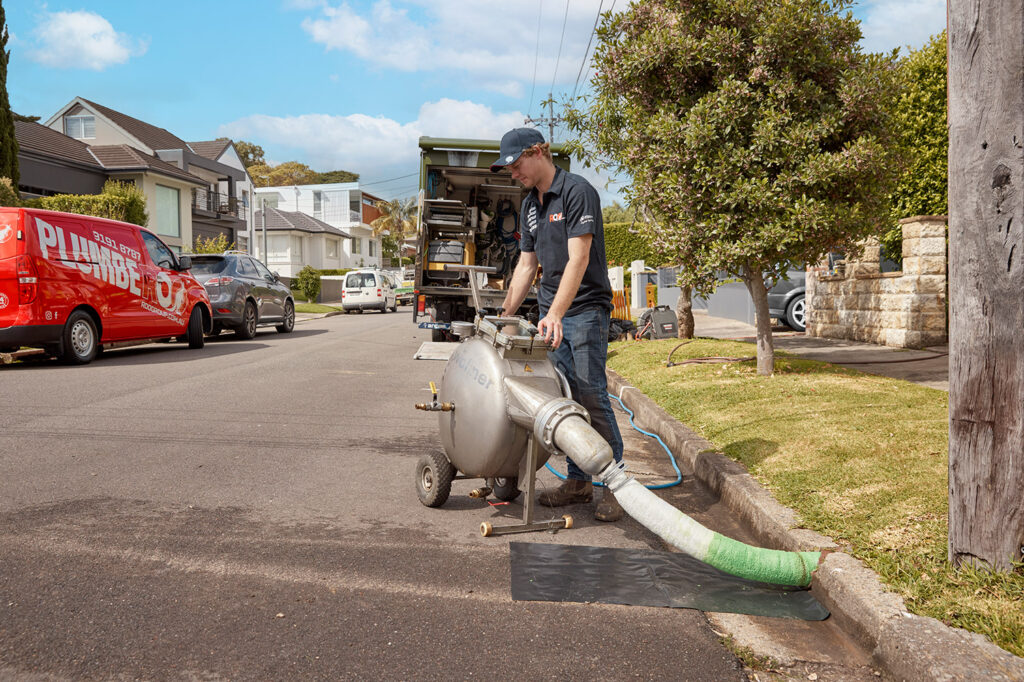
A regular inspection, with an experienced plumber using CCTV technology, can identify and resolve these problems before they cause significant issues, such as burst pipes or blocked sinks or toilets.
Regular plumbing maintenance gives homeowners peace of mind and allows you to enjoy life at home without worrying about the next emergency. With consistent plumbing maintenance, you significantly reduce the chance of ever suffering a plumbing emergency, meaning one less thing to worry about as a homeowner.
Water damage is an extremely costly and destructive issue for both homes and businesses, often requiring expensive pairs and damage to the structure. Plasterboard needs to be replaced, paint needs to be applied, and timber floors and furnishings need to be stripped out and redone at enormous cost.
That's not all of it. Even smaller plumbing issues, like cracked pipes or leaking taps, can get worse without maintenance and cause mould growth (creating a health hazard), as well as warping in walls and floors. Plumbing inspections help to ensure that water is only where it is meant to be, identifying faulty plumbing fixtures, weak spots in your plumbing system, or issues that will become major problems later.
With the cost of living going up, many households may struggle to front up the costs for significant problems in their plumbing. However, you can save money and safeguard your household budget by avoiding the risk of needing plumbing emergency repairs. Take control of your home's plumbing system and maintenance and ensure everything is functioning correctly to ward off major issues to the budget.
Maintaining your plumbing system regularly can also significantly impact the quality of your water. Old pipes can become corroded, hard water can cause mineral deposits and build-up to form, and blockages can lead to water discolouration, unpleasant odours, and in some cases, water contamination. Regular plumbing maintenance ensures that the water coming out of your taps remains clean and safe to drink for you and your family.
Plumbing maintenance is essential to the health of your plumbing system and to avoid costly repairs from minor leaks or other issues. A small cost and effort now can end up saving you time, money, and energy in the long run, not to mention the valuable peace of mind that comes with a well-maintained house.
If your plumbing maintenance is overdue, contact your local Plumberoo plumber today to find out how preventive maintenance can put the hassle of leaky pipes, faulty water heaters, and costly problems behind you for good.
Is there any other comfort we cherish more than a nice, long, hot shower? A warm bed might come close, yet in winter, streaming hot morning showers are hard to beat. That's why a reliable and efficient hot water system is essential, not only for warm showers but for cleaning dishes and washing clothes.
But how do you know when it’s time to replace yours? That's what we will help you identify in this article—the key signs of a failing hot water system. We will also help you understand its lifespan, explore energy-efficient options and how to choose the best system for your needs.
Hot water systems usually last 8-12 years. However, their lifespan can depend on various factors like water quality, pressure, and system type. Additionally, regular maintenance can help keep them running longer, not to mention more efficiently. But even the best systems eventually decline.
We mentioned there are different types of hot water systems, each with its own pros and cons:
Understanding these options helps you choose a system that suits your needs, budget, and long-term goals.

You've likely experienced this highly inconvenient disturbance to your peaceful hot shower: when your water alternates between hot and cold without warning. This frustrating occurrence might be a sign that your hot water system is struggling. Fluctuating temperatures often mean there are internal issues.
These shouldn’t be ignored. Acting quickly can prevent further damage and save you from those unpleasant cold surprises.
As mentioned, a hot water system's typical life expectancy is 10 to 15 years (with proper maintenance).
As they age, they’re more prone to issues. Do you have any idea how old your system is? Time to check. If yours is an old hot water system nearing the end of its lifespan, it might be time for a new hot water system installation.
This is a rather unpleasant one—if a rusty or discoloured hot water supply starts flowing from your taps, it’s often a sign of internal corrosion in your hot water tank. If you leave this one unchecked, the issue can worsen, leading to leaks or complete system failure. Addressing it early can save you from costly repairs and ensure your water stays clean and safe.
Another one likely to ring alarm bells is strange noises coming from your hot water system. This could mean there's sediment buildup at the bottom of the tank. Left unaddressed, this can lead to inefficiencies and even potential damage. As such, it's best to nip it in the bud to save money on costly hot water system repairs.
Now, let's look at the benefits of a new hot water system. While you may see it as an inconvenient expense, the truth is that by upgrading to a modern, energy-efficient model, you can significantly lower your energy bills while still getting reliable hot water when you need it. New options like solar systems not only reduce your environmental footprint but also deliver you long-term savings. And the benefits don't stop there—a new system also means fewer repairs, improved efficiency and, ultimately, peace of mind.
One of the best things about getting a new hot water system is the ability to get more hot water when you need it. A larger storage tank and an upgraded heating element mean that your home can enjoy a steady supply of hot water, even during peak demand times.
Perhaps you have a growing family or simply are not getting all the hot water supply you crave. Either way, if your current system can’t keep up with your needs, upgrading to a new one with increased capacity will be a welcome delight.
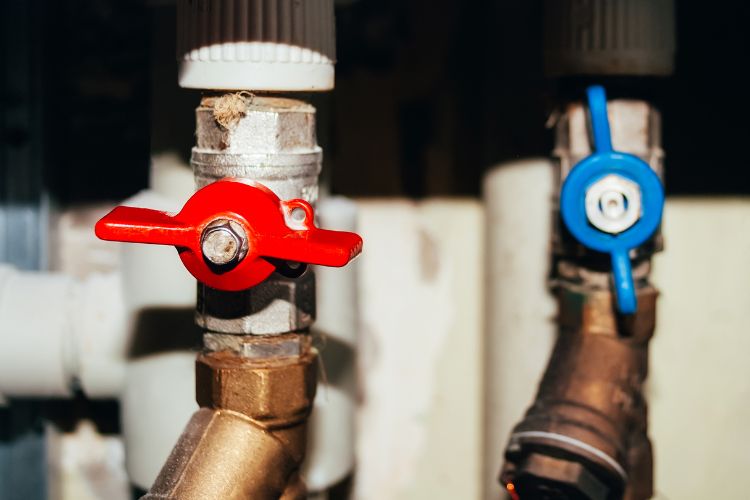
Here's a breakdown of the typical expenses and some considerations for various types of hot water systems in Australia:
Hot water system replacement can be tricky—it's best to leave this one up to the pros. Professional plumbers have the expertise to handle the installation safely and ensure everything is set up efficiently.
If you're in the Sydney region, Plumberoo offers expert installation services to make sure your new system is up and running without any hassles.

Regular maintenance is key to getting the most mileage from your hot water system. A few simple steps can go a long way.
One of the most important tasks is to flush your hot water tank (at least annually) to remove sediment buildup. Sediment accumulates over time and can lead to heating issues and potential damage. Additionally, checking and replacing the anode rod every three or so years helps protect your tank from corrosion.
You can read more on extending the life of your hot water system here.
However, the best thing you can do is to schedule a professional hot water service every few years. It ensures that your system is running at its best, minor issues can be addressed before they escalate, and a new hot water system installed if needed.
Most importantly, it means you don't have to worry and provides you with peace of mind, which is worth the cost.
Signs like inconsistent water temperature, rusty water, and strange noises. Additionally, an ageing water heating system may indicate it may need replacement.
Typically, your home's hot water system should be replaced every 10-15 years, depending on its condition and maintenance.
A hot water heater should be replaced when you turn on the hot water tap and the pressure is low or there's no hot water at all, and it's due to an aged system.
If a 7-year-old water heater is experiencing issues like reduced efficiency or frequent repairs, it might be time to replace it. However, if it's still working after a maintenance check, there's no need.
If your hot water system is acting up or completely kaput, our team offers expert advice and professional installation services to ensure you get the best solution for your needs. Contact Plumberoo, your trusted Eastern Suburbs plumber today to discuss your options and enjoy a reliable long hot shower all year round!
While a broken pipe anywhere is a massive inconvenience and downright pain to deal with, a broken sewer pipe is even worse, creating a homeowner's nightmare. Raw sewage presents multiple health hazards, while foul odours can quickly make a place unliveable if the problem is not dealt with quickly.
Join us, as we explore everything you need to know to keep your home's sewer line working as it should be, as well as what to do if you experience a blocked drain or encounter a plumbing emergency.
The home's sewer line is a direct link from the home's sinks, toilets, and showers, that carries all the grey water and waste water into the public sewerage system to be taken away for treatment at a wastewater treatment plant. The sewer line is located under the house and carries our wastewater under the front yard into the public plumbing system.
Sewer lines see a lot of action: everything we flush or wash down our sinks, drains, and toilets is taken through the sewerage system. While sewer pipes are designed to handle this load, age and wear and tear can eventually start to impact their efficacy and integrity, especially in homes that are already decades old.
Outside influences can also impact sewer line health. Tree root infiltration can break open pipes, leading to a sewer line clog and if it is bad enough, can lead to sewage backups or sewage spills, contaminating the surrounding soil at the site of the break.
Corrosion from hard water can also cause pipe damage, as build-up of calcium and magnesium narrows the pipe's diameter, putting extra pressure its structure. Additionally, their position and length puts them at risk of damage from ground movement. If there is heavy construction nearby, a seismic event like an earth tremor, or even the natural settling of soil over the years, can all impact the pipe's integrity.
Finally, improper installation or installing damaged or poor-quality pipes can create immediate problems.
Because the home's sewer system is underground, we rarely even remember it's there, at least until something goes wrong. However, like all home systems, the sewer system needs regular maintenance checks to ensure it's running in proper order.

Any signs of damage or trouble must be swiftly dealt with before it becomes a major issue. Major repairs can be costly, inconvenient, and due to the nature of the pipe's contents, can come with far more health risks and property damage than the clean water coming into the property.
Without proper, reliable drainage from drains, toilets, sinks, and appliances like washing machines and dishwashers, there is a risk of overflowing back into the home, creating a filthy mess with contaminated water. Don't run the risk. Preventative measures are the best way to ensure you don't encounter a plumbing emergency and avoid expensive indoor plumbing repairs.
Several signs can indicate a growing problem with your sewer line. If you notice slow draining or experience frequent clogged pipes connecting to your sinks, showers, and toilets, there may be a problem further into the sewerage network.
Foul smells (like rotten eggs) or strange sounds (like gurgling) coming up from your drains are another sign that all is not well, as it means waste and wastewater are not being removed effectively.
If these signs are present in one sink or shower, there is a potential problem, but if you notice multiple drains are becoming clogged at the same time, a much more significant issue may be taking place beneath your feet.
While the above warning signs can give you an idea that something is wrong, the only way to know for sure is to call in for a sewer camera inspection. Specialised tools, such as CCTV drain cameras, allow professional plumbers to visually inspect the sewer line from the drain to the mains with no need for digging or other disruptive measures. This allows for the early detection of issues before they can grow into an emergency like a cracked pipe or sewage spill.
Pipe relining is a fast and effective solution to repair subterranean pipes without the need to dig up the earth or disrupt the site of the damage. A resin-coated line is inserted into the damaged section of the pipe, where it is then inflated and hardened to create a watertight seal over the damage. Effectively, the pipe is restored to its original strength without any need to dig up the site or replace the damaged pipe itself. Pipe relining is a permanent solution for pipe repair, as the lining has a lifespan of at least 35 years.
In the rare case that a pipe is completely destroyed or compromised too much, the only option may be a traditional excavation and replacement. This is time-consuming and expensive and considered a last resort, as it often affects the landscaping and other structures near the broken pipe. However, with proper maintenance and inspections, sewer issues can often be resolved well before reaching this point.
Most DIY options are only surface-level fixes, affecting only the section of pipe that a drain snake or chemical drain cleaner can reach. Unfortunately, most serious sewer problems occur deeper within the system and without the intervention of professional services, the issues will likely only get worse.
While DIY approaches are a good and cost-effective place to start, if they do not resolve the problem or the problem reoccurs soon after, do not hesitate to call in the services of a professional plumber before the issue can grow into an emergency requiring inconvenient and costly repairs.
Licensed and certified plumbers have the expertise and experience, as well as the specialised equipment, to inspect and diagnose sewer line damage. After having the sewer line inspected, property owners can then be informed of any potential damage as well as the recommended courses of action.
This can range from minor repairs like a pipe cleaning or unblocking to the advanced trenchless sewer repair process, which can get a home's plumbing system back on track within hours.
Sewer lines should be cleaned and well-maintained but the frequency of the maintenance schedule will depend on the size of the household and collective usage habits. However, a good rule of thumb is that your sewer line should be flushed out and cleaned every 18–24 months to ensure smooth uninterrupted operation. So, what's the best way to do it?
While we might be able to effectively clean drains with chemical drain cleaners or a drain snake ourselves, DIY maintenance is limited to more surface-level cleaning.
Major issues typically occur in much deeper pipes, so you will need to call in a professional drain cleaning service for a more thorough cleaning. This helps keep your household drains clear and sharply reduces the chances of a pipe bursting or a drain line becoming clogged.
A main sewer line replacement is the removal and replacement of an old, damaged pipe to restore the integrity of the sewerage system. This typically requires extensive excavation and is used as a last resort when there is no other option.
A replacement becomes necessary if a camera inspection has found damage, such as cracks or holes, in over 50% of the sewer line. At this level of damage, a full replacement is going to be a better financial investment. For small sections of pipe with recurring clogs or tree root intrusion, a sectional replacement can also be an effective fix, especially if neighbouring damaged sections are also reinforced with pipe relining.
Pipe relining is an incredibly effective, no-dig method of repairing broken or worn-out underground pipes. Without digging up the pipe, a resin epoxy liner is fed through to the damaged section from the drain above, inflated and hardened to reinforce the pipe back to its original strength and more.
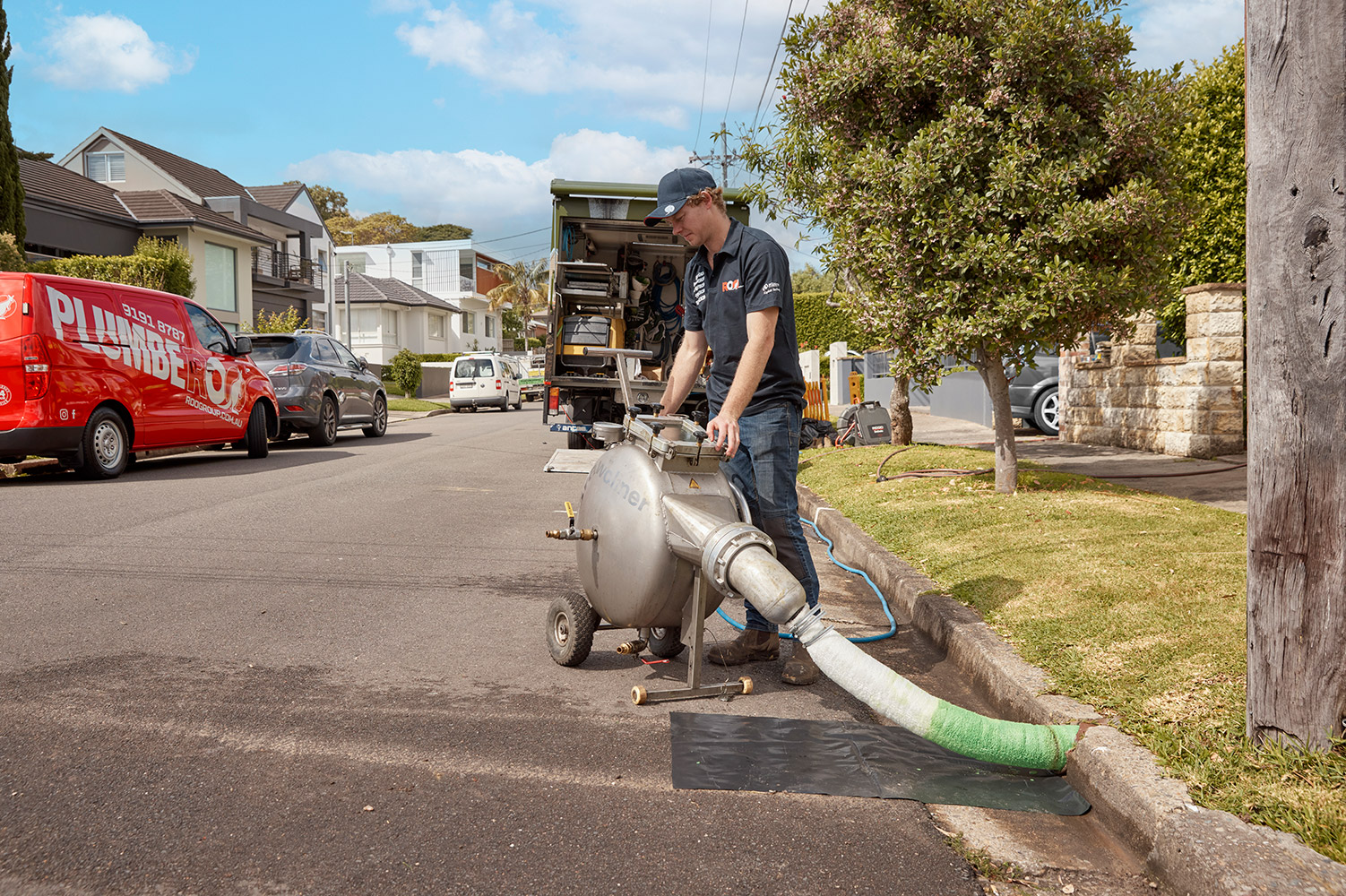
There are several benefits to pipe relining:
Local councils are responsible for the sewer main and the pipes transporting wastewater through the mains to the water treatment centre. Homeowners are responsible for the sewerage pipes leading from their homes to the mains.
The lifespan of a modern PVC sewer line is over 100 years. However, other types of pipes, such as metallic alloys or clay/earthenware pipes, may have a shorter lifespan.
If wastewater is not draining as it should, if drains are producing foul odours, sewage backups, a soggy yard, and a sudden increase in your water bill are all signs that your sewer line may need to be repaired.
If you detect one of the warning signs mentioned above, it is always best to take immediate action and call in a qualified sewer line specialist. These plumbers have extensive training and the specialised tools to inspect, diagnose, and repair any faults in your sewer lines.
So, what should you look for in a sewer line plumber?
First, make sure that sewer work is one of their areas of expertise. Next check their website for evidence of certifications, qualifications, and licenses to be sure they can legally work on sewers. Next, give yourself peace of mind by looking up their insurance and warranty information. Finally, check their online reviews to ensure that previous customers have been satisfied with their work.
One final tip is always opting for a local plumber who is familiar with the local sewerage system and understands the plumbing needs of the local area. Like us! The team at Plumberoo are locals to Sydney's eastern suburbs, so we understand the unique needs of the local area and its plumbing systems inside and out.
Qualified, certified, and with all the equipment and know-how required to inspect and repair your pipes, give the friendly Plumberoo team a call today if you notice any of the warning signs we've discussed above. Time is of the essence with a sewer line repair, so save yourself the future headache and have your sewer systems inspected and maintained with a professional plumbing service.
With all the DIY "reality" TV shows like "The Block", flooding our screens these days, it can be tempting to tackle issues at home on your own. Perhaps you fancy yourself as a handy Andy around the house or look at a job and think "How hard can it be". While DIY solutions may seem like a cost-effective way to handle easy fixes, when it comes to specialised trades like plumbing and electricity, it can be wise to just let the pros handle it.
Understanding the risks of DIY plumbing is essential to protecting your home and avoiding unnecessary repairs. Let’s look at the potential pitfalls of tackling plumbing tasks yourself and when it’s time to call in a professional.
DIY plumbing refers to when a home or business owner takes it upon themselves to fix minor plumbing tasks. These could include fixing a leaky faucet, unclogging a drain or fixing a running toilet. While DIY jobs can save time and money, they are only suitable for simple and non-technical repairs.
More complex issues like pipe repairs, major leaks, or water heater problems require professional expertise, not only to get the job done properly but to ensure safety and compliance with local regulations. Attempting such tasks without the proper knowledge or specialised tools can lead to costly damage or even personal injury.
Simple DIY plumbing mistakes, like improperly sealed joints or poorly fitted pipes, can lead to burst pipes and major leaks. This not only results in water damage to your home but can also compromise the structural integrity of your home.
Additionally, the dangers of DIY plumbing can include serious health risks, like exposing you to contaminated water, toxic black mould, or even causing electrical shock if you're working near power lines. It's important to weigh the potential risks before taking on plumbing tasks yourself—sometimes, it's just not worth it.
We get callouts for these mistakes more often than you'd believe. One of the most common DIY plumbing errors is misdiagnosing the problem. Without the trained eye of a professional plumber, it's easy to mistake the symptoms of one issue for another.
For example, a slow drain might seem like a simple clog but could be a sign of pipe damage or faulty plumbing fixtures. This is why we practice the "five whys," to get to the root cause of the issue.
Misdiagnosing an issue wastes time and money while potentially making the problem worse. What starts as a minor drip can quickly escalate into a costly flood.
On flooding, water damage is one of the most significant risks of improper DIY plumbing work. Hidden leaks gradually damage flooring, walls, and even your home’s structural integrity.
Left unchecked, these leaks often lead to mould growth, especially in areas with high humidity, which Sydney can be prone to in summer. Professional plumbing services are equipped to identify and address these risks before they escalate, ensuring your home stays free of toxic black mould.
We're in Australia, which means plumbing work must meet strict regulations. Unfortunately, non-compliant DIY enthusiasts can be on the receiving end of hefty fines or even legal issues. Australia's plumbing code exists to ensure safety, high standards and compliance in all plumbing systems.
Licensed plumbers know the local codes and ensure that every job is completed to the required standards. By hiring a professional, you not only avoid potential headaches but also get peace of mind that your plumbing is safe and compliant.
The irony in DIY plumbing repairs is that while its motivation is to save money, it can often lead to recurring issues and costly damage to your home's plumbing system. These repeated DIY repairs often end up costing far more in the long run than had DIY enthusiasts just hired a professional plumber in the first place. Another mistake made by homeowners is that DIY attempts can void warranties and insurance policies.
If you want to avoid choosing to DIY in the first place, then regular professional inspections will keep your plumbing system in optimal shape. This often is more cost-effective as a licensed plumber can spot potential issues early and recommend the best maintenance or future repairs before small problems turn into costly headaches.
Regular professional maintenance involves thorough checks of your entire plumbing system, including:
Another benefit of having a regular, trusted plumber is the peace of mind it provides during emergencies. Burst pipes, sewage backups, or gas leaks can occur without warning and cause major damage if not addressed promptly. With a reliable plumber on call, you’ll have immediate access to expert help from someone you know and trust.
Some red flags to look out for that may signify a serious plumbing issue include low water pressure, lack of hot water or sewage backups.
These signs may indicate leaks, blockages, pipe damage, malfunctioning water heaters or damaged sewer lines.
The impact of professional plumbers extends beyond the home, playing a role in maintaining public health and safety within communities. They are responsible for ensuring that our most precious resource, clean water, is delivered safely to households and that wastewater is properly disposed of.
They also help identify hidden dangers, such as gas leaks or black mould, which can pose serious health risks such as carbon monoxide poisoning. Moreover, by ensuring compliance with local building codes, they help homeowners avoid legal issues while maintaining safety standards.
When searching for a new plumber, be sure to ask for all the relevant information before hiring them to ensure they're right for the job. Here's a handy list of questions you can ask:
Choosing the right plumber means ensuring they’re licensed, insured, and experienced. But most importantly, are they reputable and trustworthy?
Ask for referrals and read online reviews to identify reputable plumbers, compare multiple quotes to ensure you're getting a fair price and look for certifications or affiliations with professional organisations as signs of quality and ethical standards.
It's best to call a professional plumber for complex issues to avoid making the problem worse and to ensure safety and proper repairs. If in doubt, call a pro.
Plumbing risks include water damage, leaks, gas leaks, and exposure to contaminants, which can lead to health hazards or expensive repairs.
Besides fixing DIY repair mistakes, the most common issue is clogged drains, often caused by debris, grease, or hair buildup, which restricts water flow.
That depends on how skilled you are and on the job at hand. DIY plumbing can be challenging and risky for more complex issues. Rule of thumb: if in doubt, call a pro.
While DIY plumbing might seem cost-effective, the DIY plumbing risks—such as water damage, hidden hazards, and costly repairs—often outweigh the benefits. Calling a trusted Sydney Eastern suburbs plumber ensures you get expert help, compliance with local regulations, and peace of mind.
If you're dealing with plumbing issues or need professional advice, don't hesitate to reach out to Plumberoo for reliable, efficient service. Contact us today to get started!
Even here in sunny Australia, winter can be tough on your plumbing including pipes, fixtures and appliances. But never fear, with a little preparation you can prevent costly damage, ensuring your home stays warm and functional throughout the season.
And that's what we're going to share with you in this article; five practical winter plumbing tips to keep your plumbing in optimal health as the cold sets in.
Even though Sydney’s weather is known for its mild winters, sudden cold weather snaps can still create issues for your plumbing. Even without freezing cold, extremely fluctuating temperatures combined with seasonal rainfall can stress your pipes. Warm air and quickly turn to cool air and understanding how to winterise your plumbing can be beneficial to avoid unexpected issues.
There are several measures you can take to keep your plumbing in top condition, protect your home and provide peace of mind throughout the cooler months.
First things first, before winter fully sets in, inspect your plumbing system for any potential issues.
Look for exposed pipes, leaks, corrosion and any other vulnerabilities. Pay special attention to unheated areas like basements, crawl spaces, and attics, as indoor plumbing in these spaces is particularly prone to the cold.
One way to protect your plumbing is to insulate exposed pipes with foam pipe insulation. This simple and cost-effective solution helps maintain a stable temperature and prevents pipes from freezing.
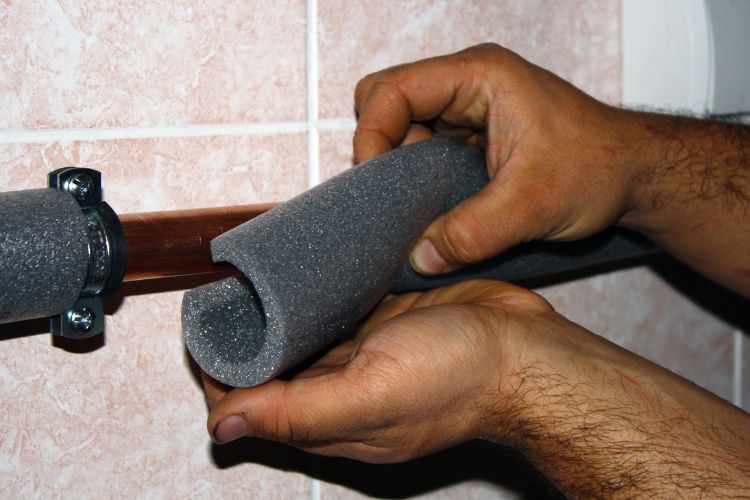
Outdoor plumbing is the most vulnerable during winter, but there are preventive measures you can take. As winter approaches, start by disconnecting and draining outdoor garden hoses to avoid hidden freezes that can lead to burst pipes.
Next, shut off the outdoor water supply with the primary shutoff valve to safeguard sprinkler systems and faucets from freezing temperatures. You might also want to get up on your ladder and check for roof leaks and any clogged gutters as the water build-up is more prone to freezing temperatures.
While not completely necessary for Sydney, to add an extra layer of protection, you can insulate outdoor faucets and exposed pipes with covers or foam insulation. If you choose to DIY you can get these materials from your local Bunnings. The extra layer of defence helps prevent freezing and bursting.
Take a walk around your home and check for gaps or cracks where pipes enter the walls—these sneaky openings can let cold air in and create big problems when temperatures drop.
The fix is simple: grab some caulk or spray foam and seal those cracks tight. Not only will this protect your plumbing, but it’ll also keep your home warmer and more energy efficient.
Before the chill sets in, you'll want to check your hot water system. After all, there's nothing worse than a cold shower on a chilly winter morning! Look for signs of wear, leaks, or unusual noises that could indicate trouble.
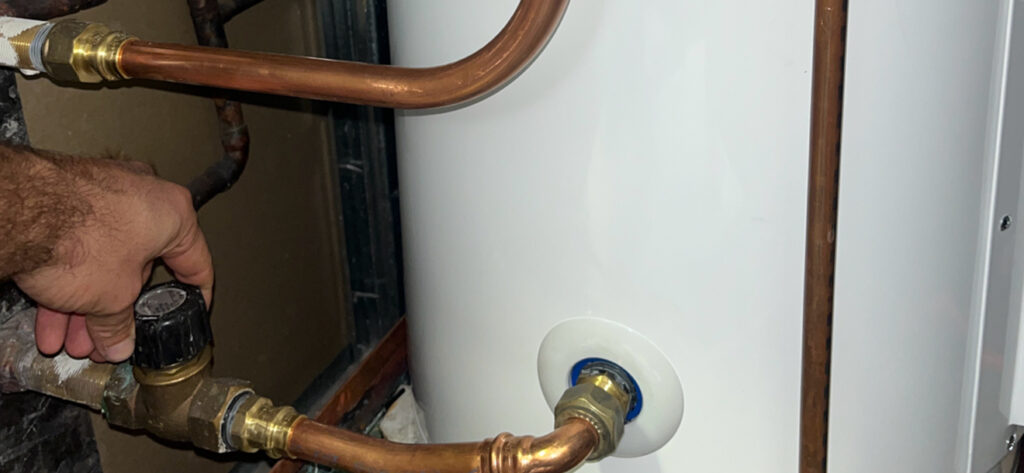
If you're unsure, consider enlisting the help of a professional. Not only does it offer peace of mind, but it can also extend the lifespan of your hot water system, save you heating costs and, most importantly, ensure your hot shower doing the winter chill!
Now, in the rare case that temperatures do drop towards zero, you may be worried about pipes freezing. Never fear, there's an easy trick: let your faucets drip slightly. This is because the movement of water, even just a trickle, helps prevent pipes from freezing. You only need to apply this for pipes located along exterior walls.
After a longer-term solution to avoid frozen pipes? Consider insulating your pipes. While there’s an upfront cost, it’s a smart investment for your home's plumbing system compared to the expense of wasted hot water. Or worse, repairing burst pipes.
The best step you can take to prepare for winter is to schedule a professional plumbing inspection. An Eastern suburbs-qualified plumber can spot potential plumbing issues you might miss. They have specialised equipment to detect hidden leaks or vulnerable pipes and provide expert advice on winterising your system.

Think of it as a preventative investment that saves you from costly repairs down the line. With professional guidance, you can have peace of mind that your home’s plumbing is ready to handle whatever winter throws your way—leaving you free to enjoy a warm, cosy and stress-free season.
Inspect and insulate exposed pipes, check for leaks, and schedule a professional inspection with a trusted plumber. Taking these preventive steps early in the season can save you thousands in potential water damage repairs.
Insulate pipes, seal gaps and cracks with caulk or spray foam, and let faucets drip during extreme cold.
Drain outdoor pipes, insulate exposed areas, and ensure your water heater is functioning efficiently.
Consider installing a smart thermostat to monitor temperatures and alert you to potential conditions that could affect your plumbing system.
Shut off outdoor water supplies, drain the lines, and use pipe covers to protect them from freezing temperatures.
If you happen to live in a more extreme cold climate, such as Jindabyne, there are some further steps you can take to protect your plumbing. Use heat tape to provide direct heat to high-risk pipes, preventing them from freezing.
Insulate your garage door and add heat cables to exposed pipes to keep your garage warm and seal rim joists to block cold air from entering and coming into contact with plumbing pipes.
Implement these five tips ahead of time to safeguard your plumbing system for winter and avoid costly repairs. From insulating exposed pipes and protecting outdoor plumbing to sealing gaps, maintaining a consistent interior temperature, and inspecting your hot water system, these proactive steps will keep your home running smoothly all season.
If you're after more expert help and peace of mind, contact Plumberoo Plumbing—your trusted Sydney professional plumbers keeping your home winter-ready.
We’ve all had that experience of stepping into the shower only to be disappointed by a weak trickle of water. Or, conversely, a spray so strong you're almost blasted back out. But water pressure issues are more than just a shower inconvenience. Besides disrupting daily routines, it can damage your plumbing system, as well as increase utility costs.
This extensive guide will explore the common causes of water pressure problems, share practical steps to diagnose and fix them, and help you determine when it’s time to call in a professional.
Water pressure determines how strong the flow of water is moving through your plumbing system. This can be delivered to your kitchen taps, showers, and appliances such as your garden hose. When water pressure is too low, tasks like filling a bath or rinsing dishes can be slow and frustrating.
Conversely, extremely high pressure can strain pipes and fixtures, potentially leading to leaks and damage over time. Therefore, maintaining balanced water pressure is key to keeping your plumbing system running smoothly.

There are several telltale signs that you have a water pressure issue at home.
Some common signs to watch out for include:
It's clear that water pressure problems are an inconvenience, but they can also impact your overall home functionality, not to mention your wallet. This is because low water pressure often results in wasted water as you spend extra time cleaning or showering. Over time, this inefficiency not only drives up water bills, but strains appliances like washing machines and dishwashers, reducing their lifespan.
On the flip side, ignoring high water pressure issues can lead to costly repairs, including burst pipes and even flooding. What starts as a normal water pressure inconvenience can quickly escalate into a significant plumbing emergency.
The key is to address water pressure problems promptly. This way, you can nip it in the bud and avoid unnecessary expenses. Most importantly, you protect your plumbing system, saving yourself the frustration of dealing with ongoing inefficiencies.
When it comes to diagnosing water pressure issues, we like to ask “why” repeatedly to dig deeper and uncover the root cause of the problem. This approach helps ensure that we’re addressing the source of the issue rather than just the symptoms.
Here are some of the most common culprits behind low water pressure:
By investigating these potential causes, you can nail down the root cause of the problem and determine the best course of action.
Water pressure in your home can be influenced by several factors that may have nothing to do with your internal systems. Some can relate to the design and location of your plumbing system.
For example, homes located far from the local water supplier often experience reduced pressure due to the distance the water must travel. Moreover, if your home is situated at a higher elevation relative to the water source, the law of gravity can cause a drop in pressure. This is especially noticeable in multi-storey buildings.
Then there's the type of piping originally installed for your home's plumbing. Narrow or outdated pipes made from materials prone to corrosion can restrict water flow, resulting in lower pressure throughout the home.
Additionally, if you have several fixtures and appliances using water simultaneously, such as in a larger home with many occupants, the demand for the system can lead to a noticeable drop in pressure. You may have experienced this when two or more people shower at the same time in one household.
By understanding these factors, you can identify whether your water pressure issues stem from normal limitations or if there are deeper plumbing problems that need addressing.
If you’re experiencing issues with water pressure, there are straightforward methods to help determine whether a problem exists.
The first thing we suggest is looking for signs of low pressure. Pay attention to the common symptoms discussed earlier, such as slow-filling sinks, showers that take too long to reach a comfortable flow, or toilets not flushing properly.
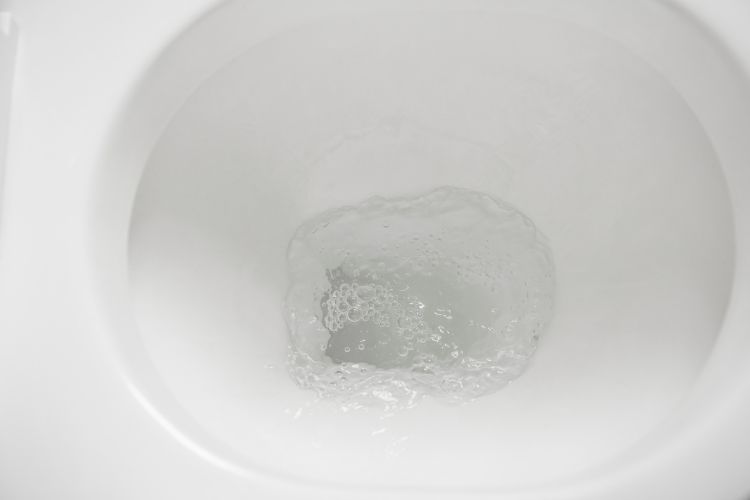
Then check the water pressure gauge, if you have one installed. It gives you a clear reading of your home's water pressure and the ideal range is typically between 500 kilopascals (kPa) or less in Australia.
You also search for leaks, damp spots, or visible corrosion on pipes. These can indicate issues with water flow, potentially leading to lower pressure throughout your plumbing system.
There are three main culprits for high water pressure:
When inspecting your plumbing system, start by examining the water mains and pipes for signs of damage. This could be corrosion, cracks or leaks. Ensure the main shut-off valve is fully open, as a partially closed valve can restrict water flow.
Additionally, inspect pipes for mineral deposits or scale buildup, which can reduce water pressure over time. Of course, if any of this overwhelms you, it's time to call a professional.
Inspect all visible pipes for signs of leaks or corrosion, including rust, discolouration and dripping water.
Walls, floors and ceilings are also a good place to monitor. Look for water damage, mould, or rot near plumbing fixtures, as these can indicate hidden issues.
However, sometimes you need to go further for hard-to-detect leaks. A leak detection tool can identify problems within walls or underground. Alternatively, a qualified plumber will have the necessary equipment and will detect your leaking water pipes in no time.
Often, we find that it's faulty plumbing fixtures that contribute to customers' water pressure issues. If you suspect this to be the case, we suggest starting by checking aerators on faucets for clogs or damage. These can restrict water flow.
Also, inspect showerheads and faucets for signs of mineral buildup, which may reduce performance. The same with toilets and other appliances for leaks, as the wastewater can impact overall pressure. Regular maintenance and timely repairs can help keep your fixtures functioning efficiently.
The pressure regulator is installed near the water meter or main water line. The device controls water pressure throughout your home. As such, when it malfunctions, so does your water pressure. You also experience leaks, unusual noises and vibrations.
Check the regulator’s settings and adjust if needed. If it appears old, damaged or corroded, it could be due for replacement.
Whereas water flow refers to how much water moves through pipes, water demand is the total water usage throughout your home.
Calculating water demand is a three-step process:
Aligning water flow and demand is key to maintaining optimal pressure. If you're finding this difficult, consider installing low-flow fixtures. Another tip is spacing out the use of water-intensive appliances throughout the day. For households with high water usage, upgrading to a larger water heater or a tankless model can help ensure consistent water pressure.
Firstly, you'll need to know about any damaged or blocked pipes. Using a pipe inspection camera can help pinpoint blockages or damage within the plumbing system. Once identified, replacing these with durable materials like PEX, copper or galvanised steel pipes can ensure better water flow and long-lasting results. Upgrading older, worn-out pipes can make a significant difference in restoring proper pressure throughout your home.
However, in some instances, you can repair leaks by applying corrosion-resistant coatings to pipes. It's best to speak to a qualified plumber to determine this. In some other cases, installing water pressure booster pumps may be necessary. A booster pump can enhance water flow, especially in homes with low municipal water pressure.
Plumbing is one of the most important aspects of a well-functioning home, and optimising your system is essential to ensure it runs efficiently. Regularly inspect pipes and fixtures and address any problems promptly. Consider upgrading to low-flow fixtures and appliances that not only conserve water but also help maintain consistent water pressure.
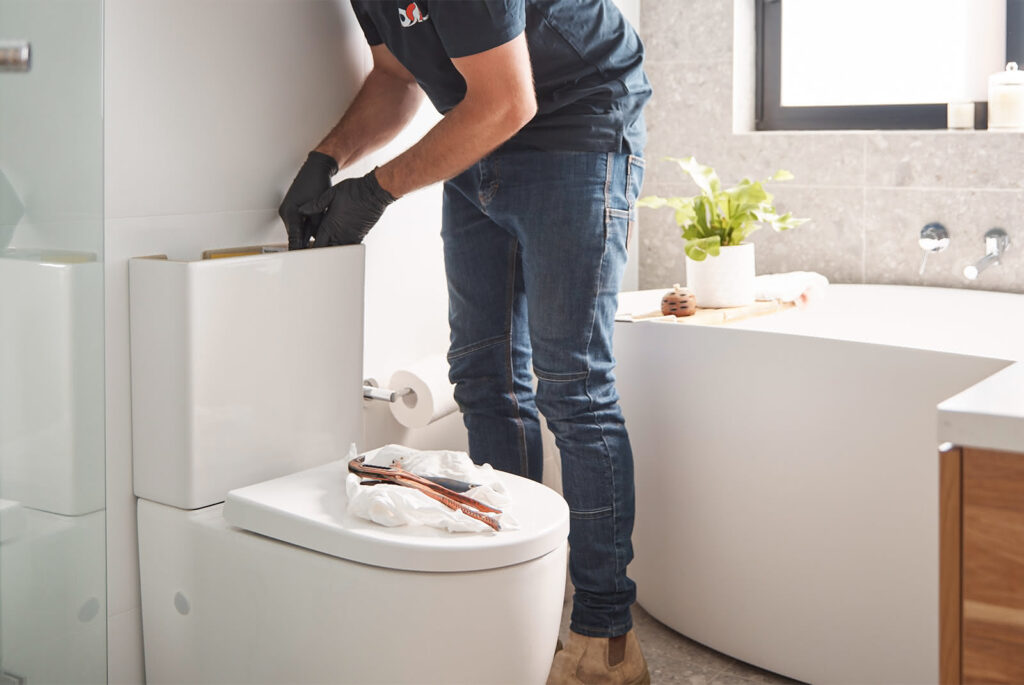
If you really want peace of mind and to keep everything in top shape, schedule annual inspections with a professional plumber to catch potential issues early. Additionally, they can perform routine maintenance tasks such as cleaning aerators, checking water pressure, and keeping an eye on your system’s overall condition.
Water pressure issues can be caused by various factors, including clogged pipes, faulty pressure regulators, and high demand on your hot water system. If you’re struggling with persistent water pressure issues which we've discussed and your DIY fixes just aren't working, it’s time to call a professional plumber. With expert knowledge, specialised tools, and liability protection, a professional can quickly diagnose and resolve the problem.
Just remember to ask for referrals, check online reviews, and verify licenses and certifications to find a reliable plumber. Contact the team at Plumberoo today for a hassle-free, reliable plumbing service for all your water pressure needs.
A hot shower has to be one of the best luxuries in life that we often take for granted. You only realise this when you're so frustrated after stepping into your shower, only to face unexpected issues like a weak water stream.
Whether stubborn clogs or annoying leaks, shower problems can quickly turn a daily ritual into a source of stress, and we all know how important that morning routine is for setting a precedent for the rest of the day.
While some issues may seem minor, ignoring them or attempting DIY fixes can often lead to even bigger headaches later on. That’s where professional plumbing services come in.
Let's dive into 7 clear signs that your shower needs the expertise of a professional plumber. By knowing what to look out for, you’ll be able to tackle issues early, avoid costly damage, and get your shower back in top shape with minimal hassle.
While your shower and hot water system might seem like a straightforward experience, behind every well-running shower, is an existing plumbing system working to deliver water at the right pressure and temperature. You see, your shower relies on several interconnected components to function properly.
A problem in any one of these areas can throw your entire shower system off balance. Professional plumbers understand this and know how all these components work together, making them the best choice for diagnosing and repairing issues.
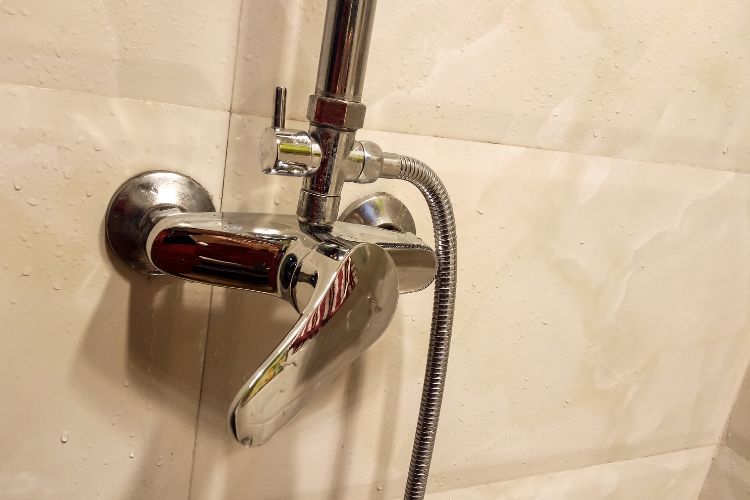
Opting for professional help for your bathroom plumbing isn’t just a matter of convenience—it’s the smartest choice. While DIY repairs might seem tempting, they often provide only temporary fixes, leaving the root cause of the problem unaddressed (We see this happen all the time when we get called out to fix DIY bathroom plumbing).
Professional expertise matters for many reasons.
Shower problems can be deceptively complex. A clogged drain might indicate a larger issue within the drainage system, or persistent leaks could stem from hidden pipe damage. We take a leaf out of Toyota's playbook and ask the five whys to get to the root of the issue. Affordable plumbing services prevent recurring issues and save our customers money in the long run.
Shower repairs require specialised equipment and advanced techniques, neither of which you're likely to possess. And that's okay. We have the tools and the know-how to use them effectively, ensuring the job is done right the first time.
Plumbing repairs must adhere to local building codes and drainage standards. Professional plumbers ensure all repairs meet these regulations, giving you that priceless peace of mind.
While a DIY approach might save money upfront, it can lead to costly mistakes or the need for frequent repairs down the line. Again, we frequently see this happen.
We've all seen mould growth, that toxic substance on your bathroom roof and/or walls. This is often the result of a once-small shower issue, such as a dripping faucet or slow drain, that's escalated into more serious problems, such as water damage. Get a pro in straight away to prevent plumbing emergencies.
In short, when you invest in professional shower repairs, you’re not just fixing the problem—you’re ensuring the longevity and efficiency of your plumbing system.
Shower issues can sometimes point to deeper problems within your plumbing system that require professional attention. Here are seven clear signs it’s time to call a professional plumber for shower repairs.
A dripping showerhead or water seeping from fixtures might seem harmless at first. But over time, those leaks can lead to extensive damage. Moisture can penetrate walls and floors, causing structural problems and creating the perfect environment for black mould.
If your shower has gone from a cascade to a trickle, it’s a sign of trouble. There could be several issues at hand here. Low water pressure can result from sediment build-up in pipes, corroded plumbing, or even hidden leaks.
Struggling to find the right water temperature or experiencing sudden changes during your shower? Frustrating, isn't it? Again, this could come down to several issues, from a failing water heater, a malfunctioning mixing valve, or other plumbing problems.
Standing water in your shower isn’t just unpleasant—it’s a clear sign of a blocked drain. Hair, soap scum, and debris can cause clogs that worsen over time. While DIY methods may offer temporary relief, professional plumbers have specialised tools like drain snakes and hydro-jetting equipment to clear stubborn blockages and restore proper drainage.
If you notice mould or mildew in your shower area, it could be a sign of a hidden plumbing issue, such as leaks or poor drainage. Mould isn’t just unsightly—it poses serious health risks, particularly for those with allergies or respiratory conditions.

Do your pipes bang, whistle, or rattle when you turn on the shower? That's a telltale sign you need a plumber. These noises, often referred to as “water hammer,” can indicate loose fittings, high water pressure, or air in the pipes.
If your water bills have suddenly spiked without a change in usage, a hidden leak could be the suspect. Small leaks, such as those in your shower system, can waste hundreds of litres of water over time, costing you more than you realise.
As such, recognising issues and contacting a professional plumber can save water, costly repairs and water damage.
When shower problems arise, you probably wonder if you can handle the issue yourself or if it’s time to call in a pro. While some minor issues potentially can be resolved yourself, it's often best to get an expert.
Some minor shower problems can be addressed with basic tools and DIY plumbing. These include:
While these small fixes can save you time and money, it’s important to ensure you’re confident in what you’re doing to avoid making the problem worse.
While DIY repairs can be helpful for minor issues, there are certain situations where professional expertise is non-negotiable:
It's worth noting that shower systems rely on either electrical or gas components for heating water. As a result, it's important to understand the difference when addressing repairs.
Electric-powered systems heat water on demand, using electricity to warm the water in real time as it flows through the pipes. As such, issues with electrical systems—such as inconsistent water temperatures or no hot water—could point to problems with the heating element, wiring, or thermostat.
Gas water heaters use natural gas or LPG to heat water stored in a tank or on-demand (instantaneous systems). Common issues include pilot light failures, gas leaks, or faulty valves. Given the safety risks associated with gas systems, professional servicing is highly recommended.

A quality local plumber will have the knowledge and experience to deal with complex issues in both of these systems.
Most likely, especially for addressing leaks, drainage problems, or water pressure issues effectively and safely.
Signs of plumbing issues include leaks, low water pressure, strange noises, mould growth, or unexpectedly high water bills.
Call a plumber if DIY fixes don’t resolve the issue or if you notice persistent problems like leaks, clogs, or water temperature inconsistencies.
Plumbing problems can be diagnosed using tools like CCTV cameras, pressure tests, and professional inspections.
Always choose a plumber who is licensed and insured. This ensures they meet industry standards and can provide safe, reliable service. Additionally, online reviews, testimonials, or recommendations from friends and family can point you in the right direction. Look for consistent positive feedback about their professionalism and quality of work.
Finally, trustworthy plumbers provide clear, upfront pricing without hidden fees. Ask for a detailed quote to avoid surprises.
Don’t let shower problems disrupt your daily routine and affect your precious state of mind. At Plumberoo, we offer expert shower repair, ensuring your plumbing is in top condition. Contact us today to book a consultation and let our trusted, friendly and professional team restore your shower’s performance.
When it comes to home safety, few topics are as important as gas safety. Natural gas has become a part of our daily lives, yet many homeowners still aren't confident about the necessary safety protocols and maintenance requirements. Whether you're cooking dinner or taking a hot shower, understanding gas safety is crucial for protecting your family and property.
In this comprehensive guide, we'll share the essentials of gas safety, equipping you with all the knowledge and practical safety tips to identify signs of concern, prevent accidents and respond effectively should an emergency arise.
Natural gas is a versatile energy source composed of hydrocarbons, including methane, nitrogen and carbon dioxide. It's valued for its efficiency and relatively low environmental impact compared to other fossil fuels.
It can however be dangerous if not handled correctly. It's highly flammable, meaning even a small gas leak can lead to fires and explosions. It's also odourless in its natural state, making some leaks harder to detect.
Gas safety is essential for preventing accidents and creating a safe environment to live in. Faulty appliances or poor ventilation can very quickly become larger, more dangerous issues if not dealt with promptly and effectively.
Ensuring professional installation and inspections can help you ensure your property adheres to safety guidelines and regulations and that you and your family are safe from any risks associated with a natural gas leak.
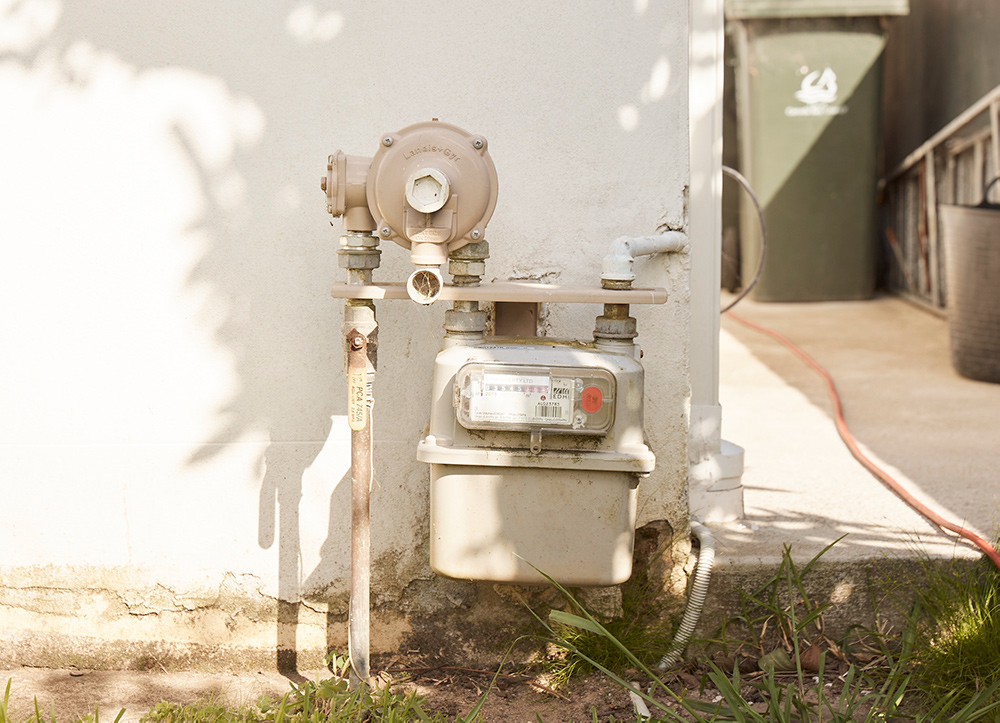
There are some key signs of a natural gas leak. While odourless in its natural state, a rotten egg smell is a common clue that something's not right. Other indicators include hissing sounds, air bubbles and dying plants with no explanation.
If you happen to inhale natural gas, Healthline says you may experience physical symptoms such as headaches, dizziness, nausea, eye and throat irritation, fatigue, breathing problems or pale skin or blisters.
If you smell gas or suspect a gas leak, you need to evacuate the area immediately. Remaining in the property could pose risks to your well-being or the health of children or pets. Don't use any electrical devices or appliances including phones as they can ignite the gas, causing potential fires.
Never investigate the leak or try to shut off the gas supply yourself. Call the emergency services or national gas emergency number (1800 GAS LEAK (1800 427 532)) as soon as possible, immediate action is crucial.
Wait in a safe space for the expert to arrive and resolve the problem. Don't reenter the property until they have assured you it's safe to do so.
The Mayo Clinic describes carbon monoxide poisoning is a serious and potentially fatal condition that occurs when high levels of carbon monoxide in the air cause the body to absorb it in place of oxygen in red blood cells.
Carbon monoxide is produced by burning fuels, including gas, wood, propane or charcoal. Appliances that aren't well-vented can cause the gas to build up while small, enclosed spaces make this dangerous build-up worse.
Installing carbon monoxide detectors can help alert you to any potentially dangerous leaks around the home. As an invisible, odourless gas, these monitors are critical for your safety. Install detectors on each level of your home, as well as by sleeping areas.

Ensure your detectors meet local regulations and remember to change the batteries regularly. Some modern devices come with a digital display or voice alerts, for an extra level of protection.
To ensure the safety of those living on your property, it's recommended to have a professional inspect your appliances regularly. Not only will this identify any potential risks but ensure the optimal performance of your equipment—a win-win!
During regular inspections, a plumber can check and clean your heating system to prevent issues like incomplete combustion or carbon monoxide leaks. Don't try and complete this task yourself, call in the experts who have all the necessary tools and experience to do the checks safely.
To ensure proper airflow, keep the area around your furnace clear and keep any flammable materials well away. Cleaning solutions or paint coming into contact with the furnace could result in fire or dangerous fumes.
Maintaining a clear space around the furnace also helps prevent overheating and ensures the system operates efficiently and safely.
There are some common warning signs of gas furnace issues that may signal it's time to call in an expert.
A gas furnace should typically have a steady, glowing blue flame. If you notice any changes to this flame, it's likely there's an issue. Problems often manifest as yellow, orange or green flames and indicate that gas is not burning efficiently.
Listen out for any noises you haven't heard before like rattling or squeaking as an indication of loose parts. Complete silence is also suspicious and worth having a plumber check.
High utility bills can also act as a warning sign. It could be an indication that your heating system isn't working as efficiently as it should be. The fix could be a simple change of filter or may need some deeper investigating by an expert, so the issue doesn't get worse over time.
Your gas line transports natural gas from the main supply to the appliances in your home, including furnaces, water heaters, stoves, and more. Having a plumber perform regular maintenance ensures proper functioning and highlights any potential hazards before they escalate into major problems.
There are some DIY checks you can do to spot visible signs of damage to your gas lines. Look for any cracks or rusty joints or fittings. Enlist the help of someone to shine a light on places difficult to see or use a mirror for the really hidden parts.
If you notice anything of concern, or don't feel like you can complete a thorough inspection, seek professional help—it's what we're here for. Certified technicians have all the specialised equipment to ensure that no gas leak goes unnoticed.
You probably use your gas-powered appliances day in, day out, without much thought—but are you using them safely?

As mentioned earlier, ensure there's plenty of ventilation around the appliance, maintain proper airflow in the room and keep flammable materials away. Always refer to manufacturer guidelines when installing or disconnecting any gas appliance.
Never leave gas heating on overnight or when you're out of the house and always supervise children in proximity to gas appliances. Make sure to regularly clean your gas stove, oven and grill to remove fat and grease build up, reducing the risk of fire.
Emergencies, by nature, happen when we're not expecting them—gas leaks are no different. Having a plan in place should an incident occur is always a good idea. Educate family members on the plan so that everyone knows the course of action should something happen.
Include contact information for the emergency services along with your propane supplier. Signal meeting points a safe distance away from the property complete with evacuation routes. Take the time to practise this plan, especially with young children.
With such potential dangers at stake, learning about topics like gas safety can feel overwhelming. So long as you're aware of the warning signs and safety tips, keeping up with regular maintenance and speaking to the experts when necessary, you're on the road to safe operation.
Does your kitchen smell of rotten eggs? Is your furnace flame burning green? Or perhaps your gas line pipe is suspiciously silent? Don't risk being exposed to harmful gases, keep your family safe and call in team Plumberoo to identify any early warning signs of a natural gas leak.